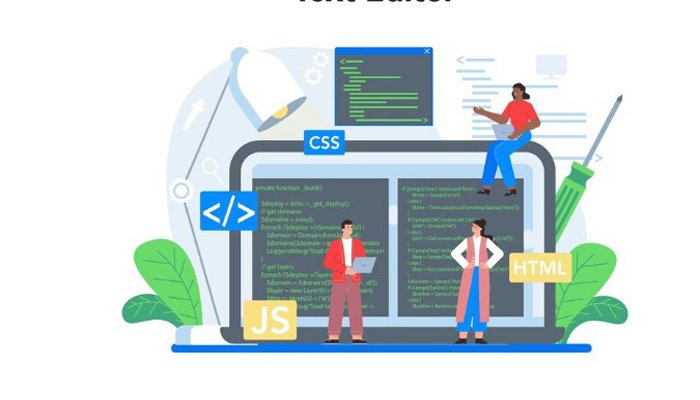
Building Your First PHP Website: A Step-by-Step Guide
Introduction: Unpacking the Basics of PHP Website Creation
Brief Overview of PHP and Its Significance in Web Development
PHP, short for Hypertext Preprocessor, is a server-side scripting language designed specifically for web development. It enables the creation of dynamic content that interacts with databases, making it an ideal tool for developing websites and online applications. Its significance in web development lies in its wide adoption, ease of use, and flexibility, allowing developers to build complex web applications efficiently.
The Advantages of Using PHP for Creating Dynamic Websites
PHP offers numerous advantages for web developers, including its compatibility with various database management systems, ease of integration with HTML and CSS, and extensive community support. Its ability to generate dynamic page content and manage session tracking enhances user engagement and functionality of websites. Additionally, PHP’s server-side execution model contributes to the security of web applications.
Why Opt for PHP in Web Development?
Discuss the Benefits of PHP Over Other Programming Languages
PHP stands out among other programming languages for its simplicity, speed, and efficiency. Its syntax is accessible to newcomers, yet powerful enough for complex development tasks. PHP’s extensive standard library and compatibility with major operating systems and web servers make it a versatile choice for developers. Furthermore, the open-source nature of PHP reduces development costs, making it a cost-effective solution for businesses and individuals alike.
The Role of PHP in Modern Web Development Ecosystems
In modern web development ecosystems, PHP plays a pivotal role by powering popular content management systems (CMS) like WordPress, Joomla, and Drupal. This widespread use underscores PHP’s reliability and robustness for building everything from personal blogs to large-scale enterprise websites. Additionally, PHP’s continual updates and improvements ensure it remains relevant in the evolving landscape of web technology.
Getting Started: Preparing Your Development Environment
Essential Tools and Resources for PHP Development
To start developing with PHP, one needs a text editor or integrated development environment (IDE), a web server (Apache or Nginx), and a database (MySQL or MariaDB). Tools like XAMPP or MAMP simplify the setup by bundling these components into a single package. Additionally, accessing online resources and documentation, such as the official PHP manual, can provide valuable guidance and support.
Setting Up a Local Server Environment for PHP Projects
Creating a local server environment involves installing a software stack like LAMP (Linux), WAMP (Windows), or MAMP (Mac) that includes Linux/Windows/Mac, Apache, MySQL, and PHP. This setup allows developers to test and debug PHP scripts on their computers before deploying them to a live server, ensuring a smooth development process.
Decoding PHP Syntax: Your First Steps in Web Programming
Basic PHP Syntax and Constructs for Beginners
PHP syntax is designed to be straightforward and easy to learn for beginners. It involves embedding PHP code within HTML using PHP tags. Key constructs include variables, conditionals, loops, and functions, which control the logic and flow of a PHP script. Understanding these basic constructs is essential for creating dynamic and interactive web pages.
Creating Your First PHP Script
Your first PHP script might involve displaying the current date and time on a web page. This task introduces you to echoing output to the browser, working with PHP’s built-in date and time functions, and embedding PHP code within an HTML document. Creating such a script serves as a practical introduction to PHP programming and its potential for web development.

Blueprint for a PHP Website: Laying the Foundation
Planning and Structuring Your PHP Project
Planning your PHP project involves outlining the website’s goals, functionality, and user interaction flow. This stage defines the structure of the project, including the database schema, the organization of PHP scripts, and the layout of user interfaces. Effective planning ensures a solid foundation for the development process, facilitating a coherent and functional web application.
Designing the Core Web Pages: Index, Registration, etc.
Designing the core web pages of a PHP website involves creating templates for essential pages such as the home page (index), registration, login, and content pages. These templates typically include HTML for structure, CSS for styling, and PHP for dynamic content and user interaction. By focusing on the design and functionality of these key pages, developers can ensure a consistent and engaging user experience throughout the website.
Designing the Header: The Gateway to Your PHP Site
Importance of a Well-Designed Header
The header of a website serves as the gateway to your PHP site, setting the tone and providing essential navigation for users. It’s the first element that visitors interact with, making its design crucial for creating a positive first impression. A well-designed header contributes to the site’s overall usability and aesthetic appeal, reinforcing the brand and enhancing user experience.
Tips and Best Practices for Creating a PHP Header
Creating an effective PHP header involves more than just visual design; it also includes functional aspects that improve site navigation and accessibility. Best practices include incorporating a responsive design to ensure the header looks good on all devices, using clear and concise navigation menus, and integrating a search function for easy content access. Additionally, including branding elements, such as a logo and tagline, can strengthen brand recognition.
Populating the Body: Infusing Content into Your PHP Web Pages
Dynamically Generating Content Using PHP
PHP excels at dynamically generating web page content, allowing for personalized user experiences and efficient content management. By retrieving data from a database based on user interactions or specific criteria, PHP scripts can display tailored content, such as user profiles, product listings, or blog posts. This dynamic generation of content keeps websites fresh and relevant, encouraging user engagement.
Managing Content: Adding, Displaying, and Editing Data
Content management involves not just displaying data but also providing mechanisms for adding and editing content. PHP facilitates these operations through forms for data input and scripts for processing and updating database records. Implementing secure and user-friendly content management features, such as dashboards and editor interfaces, allows website administrators and users to easily update information without direct database access.
Footer Construction: Final Touches for Your PHP Website
Crafting a Footer for Your Site
The footer of a website, though often overlooked, plays a critical role in providing additional navigation and information to users. Crafting a footer for your PHP site involves deciding what elements to include, such as copyright notices, contact information, links to privacy policies, and social media icons. A well-constructed footer can enhance the credibility and user-friendliness of your site.
What to Include in Your PHP Website’s Footer
A PHP website’s footer should include elements that offer value to users and meet legal requirements. This might include a sitemap, terms of service, accessibility options, and social media links. Including a brief about section or a newsletter signup form can also add value. The choice of elements depends on the website’s goals and audience needs.
Database Essentials: From Creation to Connection
Introduction to Databases in PHP
Databases play a central role in PHP web development, enabling the storage, retrieval, and manipulation of data. PHP commonly interacts with SQL-based databases, such as MySQL, to perform these functions. Understanding how to design and structure a database is key to efficiently managing the data behind a dynamic PHP website.
Connecting Your PHP Site to a Database
Connecting your PHP site to a database involves using PHP’s database-specific functions or data access abstractions like PDO (PHP Data Objects) to establish a connection. This process typically requires specifying the database server, username, password, and database name in your PHP script. Properly managing this connection is crucial for executing queries securely and efficiently, laying the foundation for dynamic content management and user interaction on your site.
Incorporating Users: Registration and Authentication Mechanisms
Implementing User Registration and Authentication
User registration and authentication are pivotal components of modern web applications, allowing personalized access and secure user experiences. Implementing these features in PHP involves creating a registration form for user input, storing user information securely in a database, and verifying credentials during the login process. Password hashing and secure session management are essential practices to protect user data and authentication sessions.
Enhancing Security: Testing and Protecting Your Pages
Security in user registration and authentication processes cannot be overstated. Enhancing security involves regularly testing your PHP pages for vulnerabilities such as SQL injection, cross-site scripting (XSS), and cross-site request forgery (CSRF). Implementing protection mechanisms, including input validation, output encoding, and using security tokens, helps safeguard your website against these threats.
Facilitating User Interaction: Login Systems and Homepage Customization
Creating a Login System with PHP
A login system serves as the gateway for personalized user experiences on a website. Creating a login system with PHP involves handling user credentials securely, managing sessions to keep users logged in, and redirecting users based on their authentication status. Such systems should also provide robust error handling and user feedback for login attempts.
Customizing the Homepage Based on User Interaction
Customizing the homepage based on user interaction enhances user engagement and personalization. PHP can dynamically alter homepage content based on user preferences, login status, and past interactions. This customization might include personalized greetings, recommended content, or user-specific notifications, making the website more relevant and engaging for each user.
Advanced Data Operations: Deleting and Displaying Public Information
Handling Advanced Data Operations in PHP
Advanced data operations in PHP go beyond basic CRUD (Create, Read, Update, Delete) functionalities, encompassing secure data deletion and sophisticated data display mechanisms. Implementing soft deletes (marking data as deleted without actually removing it from the database) and managing data visibility and access permissions are examples of such operations.
Techniques for Securely Deleting and Displaying Data
Securely deleting and displaying data involves ensuring that sensitive information is protected and that only authorized users can access specific data. Techniques include using parameterized queries to prevent SQL injection, implementing access control lists (ACLs) for data visibility, and securely purging data when necessary to protect user privacy.

Evaluating PHP’s Role in Modern Web Development
The Current State of PHP in the Web Development Landscape
PHP remains a robust and widely used language in the web development landscape, powering a significant portion of the internet, including major content management systems and web applications. Its continued evolution, with regular updates and improvements, ensures its relevance and effectiveness for modern web development challenges.
Future Prospects of PHP and Its Community
The future prospects of PHP are bright, with ongoing development of the language, its frameworks, and tools enhancing its performance, security, and ease of use. The vibrant PHP community contributes to its growth by developing open-source projects, sharing knowledge, and fostering innovation, indicating a promising direction for PHP in the years to come.
Conclusion: Reflecting on the PHP Development Journey
Summarizing the Key Takeaways from the Journey of PHP Web Development
Reflecting on the PHP development journey, key takeaways include the importance of understanding PHP’s fundamental concepts, the critical role of security in user management, and the versatility of PHP in creating dynamic, interactive websites. The journey from setting up a development environment to implementing advanced features underscores PHP’s flexibility and power as a server-side scripting language.
Encouraging Readers to Continue Exploring and Learning PHP
As the web development landscape evolves, so too does PHP and its ecosystem. Encouraging readers to continue exploring and learning PHP is vital for staying current with best practices, security measures, and new features. The journey in PHP development is one of continuous learning and adaptation, offering endless opportunities for growth and innovation.

As a seasoned professional with a unique blend of skills in Computer Design and Digital Marketing, I bring a comprehensive perspective to the digital landscape. Holding degrees in both Computer Science and Marketing, I excel in creating visually appealing and user-friendly designs while strategically promoting them in the digital world.

